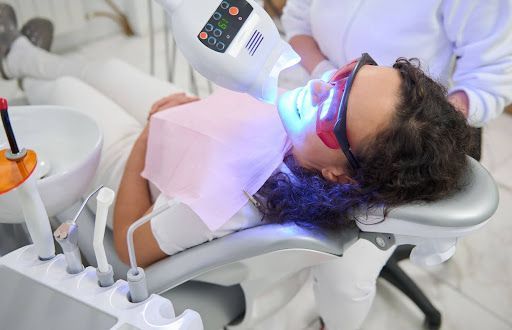When Is the Right Time for Braces?
Orthodontic treatment, such as braces, represents a significant investment of time and resources, with the ultimate goal of achieving a healthier and more aesthetically pleasing smile. Determining the ideal time to start treatment can be challenging, as it depends on a variety of dental and developmental factors. Recognizing the key indicators that suggest the need for orthodontic intervention can help individuals and parents make informed decisions about when to seek professional advice.
Recognizing the Need for Orthodontic Treatment
Orthodontic treatment becomes necessary when noticeable issues arise with teeth alignment or bite. Common signs include crowded or overlapping teeth, significant gaps, and overbite or underbite issues. These problems affect not only the appearance of a smile but also oral health, as misaligned teeth can lead to difficulties in cleaning, increasing the risk of cavities and gum disease.
Another critical indicator is the age at which permanent teeth begin to emerge. While there is no set age for starting orthodontic treatment, many orthodontists recommend an initial evaluation around the age of seven. This early assessment allows for the detection of potential issues and the development of a treatment plan tailored to the child's unique needs.
The growth and development of the jaw also play a significant role in determining the need for braces. An orthodontist can evaluate whether the jaw is developing properly and if interventions are needed to guide its growth. Early intervention can sometimes prevent more severe issues from developing later.
The Benefits of Early Orthodontic Evaluation
Early orthodontic evaluations offer several advantages. By assessing a child’s dental development at a young age, orthodontists can identify issues that may not be immediately apparent. This proactive approach allows for timely intervention, potentially simplifying or shortening the overall treatment process.
An early evaluation also provides the opportunity to guide the growth of the jaw and teeth. In some cases, early treatment can prevent the need for more extensive procedures in the future. For instance, if a child has a narrow jaw, early intervention can help expand it, creating more room for permanent teeth to emerge correctly.
Additionally, early evaluations offer peace of mind for parents. Knowing that a professional is monitoring their child’s dental development ensures that any issues will be addressed promptly. This reduces the likelihood of unexpected problems arising later, making the entire orthodontic experience smoother and more predictable.
Exploring Orthodontic Treatment Options
When it comes to orthodontic treatment, several options are available, each with distinct benefits and considerations. Traditional metal braces are the most common choice, known for their effectiveness in correcting a wide range of dental issues. These braces consist of metal brackets and wires that gradually shift teeth into the desired position.
For those seeking a less noticeable option, ceramic braces are an alternative. Functioning similarly to metal braces, they use tooth-colored or clear brackets, making them less conspicuous. While they offer aesthetic advantages, they may require more careful maintenance to prevent staining.
Clear aligners, such as Invisalign, have gained popularity for their convenience and discreet appearance. These removable trays are custom-made to fit the patient's teeth and are changed every few weeks to continue the alignment process. Clear aligners are particularly appealing to adults and teens who wish to straighten their teeth without the visibility of traditional braces.
The Role of Technology in Modern Orthodontics
Advancements in technology have significantly enhanced orthodontics, making treatments more efficient and comfortable. Digital imaging and 3D modeling allow orthodontists to create precise treatment plans tailored to each patient’s unique dental structure. This technology provides a clear visual representation of the expected outcome, helping patients understand the process and set realistic expectations.
Intraoral scanners have replaced traditional molds for taking impressions of teeth, providing a more comfortable experience and producing highly accurate digital models. This accuracy translates into better-fitting appliances and more predictable treatment results.
Technology also aids in monitoring progress during treatment. With specialized software, orthodontists can track tooth movement and make necessary adjustments to the treatment plan, ensuring that the treatment stays on course and any potential issues are addressed promptly.
Managing Expectations and Understanding the Commitment
Embarking on orthodontic treatment requires a commitment to maintaining good oral hygiene and attending regular appointments. Patients should be prepared for the responsibilities that come with wearing braces or aligners, such as avoiding certain foods and practicing diligent cleaning routines.
Understanding the duration of treatment is also crucial. While the average treatment time for braces is around one to three years, this can vary depending on the complexity of the case. Patients should discuss the expected timeline with their orthodontist and be prepared for adjustments along the way.
Patience is essential throughout the orthodontic process. While the results are rewarding, achieving the desired outcome takes time and dedication. Keeping the end goal in mind and adhering to the orthodontist’s recommendations will help ensure a successful treatment experience.
The Importance of Choosing the Right Orthodontist
Selecting the right orthodontist is a crucial step in the treatment process. Patients should seek a professional with experience, a good reputation, and a treatment philosophy that aligns with their needs. A thorough consultation allows patients to ask questions, discuss concerns, and gain a clear understanding of the proposed treatment plan.
It is also important to consider the orthodontist’s approach to patient care. A supportive and communicative orthodontist can make the treatment journey more comfortable and less stressful. Patients should feel confident in their orthodontist’s ability to address any issues that may arise during treatment.
Location and convenience are additional factors to consider when choosing an orthodontist. Regular appointments are necessary throughout the treatment process, so selecting a practice that is easily accessible can simplify the logistics of attending these visits.
Understanding the right time for braces involves recognizing key orthodontic indicators and seeking professional advice. Early evaluations can provide valuable insights into a child's dental development, allowing for timely intervention and a smoother treatment journey. With various treatment options and technological advancements, orthodontic care is more accessible and effective than ever. By choosing the right orthodontist and committing to the treatment process, patients can achieve the healthy, beautiful smiles they desire.
For expert orthodontic care tailored to your needs, contact McAllister Orthodontics today. Our experienced team is dedicated to helping you achieve a healthy, confident smile through personalized treatment plans and exceptional patient care.












